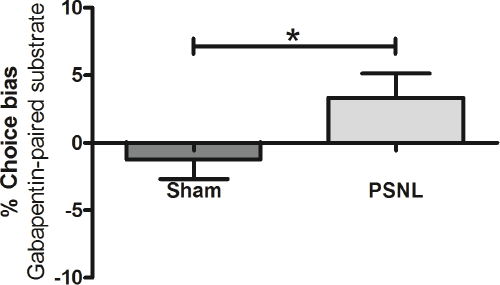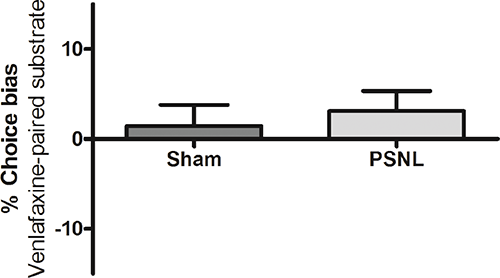Investigating Cognitive Affective Biases in Chronic Pain Current therapy for chronic pain is inadequate. Treatments focus on hypersensitivity symptoms and neglect the affective experience. The importance of the affective state is highlighted by the prevalent comorbidity of chronic pain with depression. This work aimed to investigate the affective state in chronic pain using a novel assay designed to quantify cognitive affective biases in rodents (1). The affective bias test (ABT) uses a bowl-digging task in which rats encounter two independent positive experiences (finding food reward in a specific digging substrate). The two experiences are acquired during discrimination learning sessions under either treatment or control conditions, and the absolute reward value is kept consistent. Affective bias is quantified in a preference test in which both previously rewarded substrates are presented together and the rats’ choices recorded over 30 randomly reinforced trials. 32 Lister-Hooded rats (Harlan) underwent either partial saphenous nerve ligation (PSNL) or sham surgery (n=16/group). After 2 weeks recovery, rats were tested in the ABT to determine (a) processing of absolute reward value (2 vs. 1 pellet) (b) the effect of analgesia on affective bias (50mg/kg gabapentin vs. vehicle, oral in milkshake) (c) antidepressant effect on affective bias (3mg/kg venlafaxine vs. vehicle i.p.). Post-surgery, the sham rats preferred the substrate paired with the higher value reward (t15=2.936, p= 0.0102). However PSNL rats did not show this bias (t15=1.309, p= 0.2102) and their responding differed significantly from sham (two-tailed t-test t30=3.144, p=0.0037, Fig 1). Acute treatment with gabapentin had no effect in sham rats, but induced a positive affective bias in the PSNL group versus sham (one-tailed t-test t28=2.011, p=0.0270, Fig 2). Venlafaxine did not induce a significant bias in either sham (t15=0.6189, p= 0.5453) or PSNL (t15=1.392, p=0.1844, Fig 3).
Fig 1: Preference for the higher rewarded substrate
Fig 2: Preference for gabapentin paired substrate
Fig 3: Preference for venlafaxine paired substrate In summary, these data suggest that neuropathic pain diminishes the ability to distinguish a greater reward value. The increased positive bias to gabapentin in PSNL rats compared to sham, tentatively suggests that analgesia may act to relieve the negative affective state associated with pain. Antidepressant venlafaxine appeared not to influence affective state in either group, although this may have resulted from a substrate bias. All procedures were conducted in accordance with the requirements of the UK Animals (Scientific Procedures) Act 1986 and local institutional guidelines. (1) Stuart et al. (2013) Neuropsychopharmacology 38: 1625–1635
|




